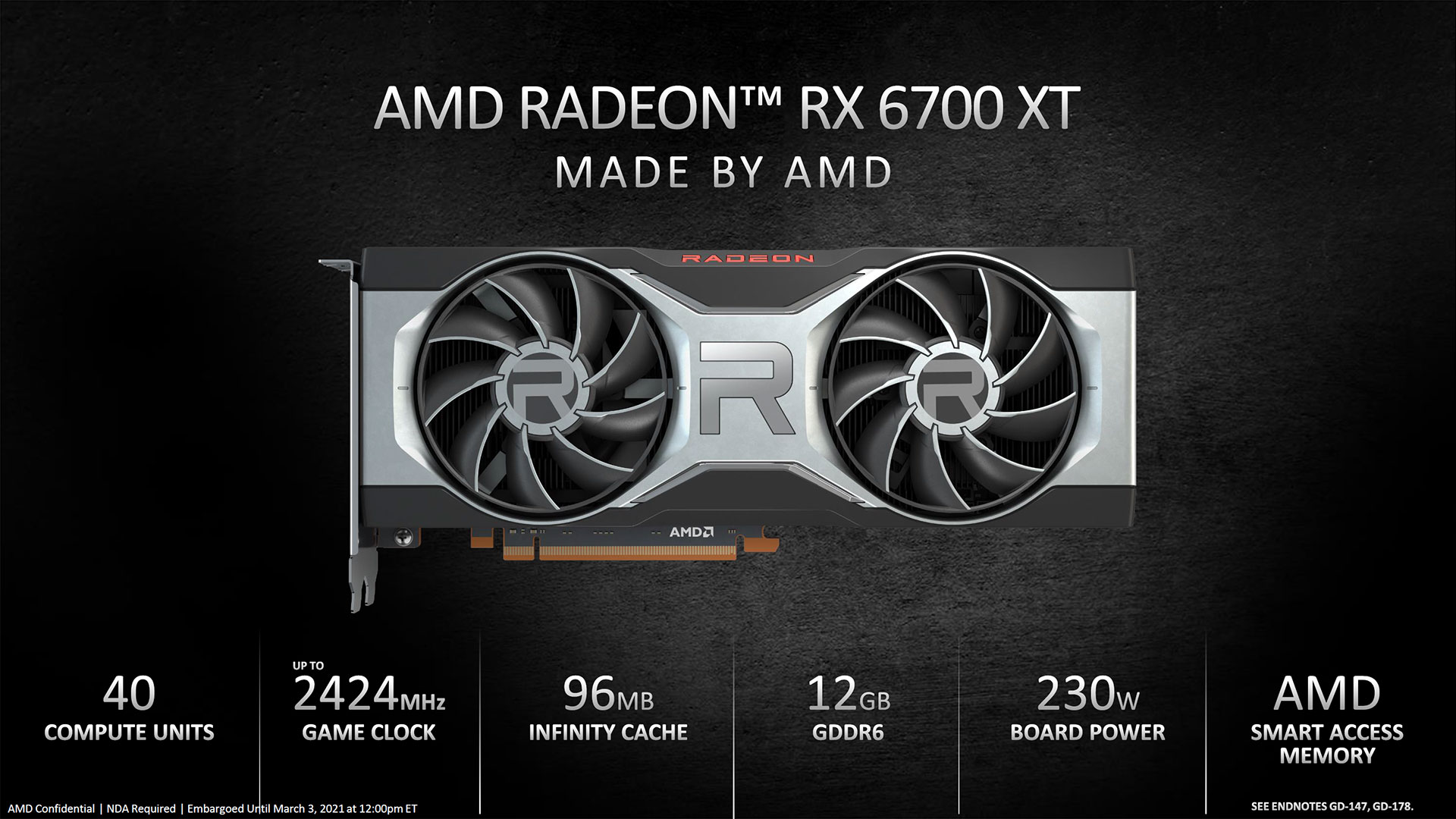AMD Radeon RX 6700 XT Specs, Pricing, and Launch Date Revealed
Navi 22 targets RTX 3060 Ti and 3070 performance for $479
We now have official specs for the AMD Radeon RX 6700 XT, yet another poorly kept secret in the land of GPUs you can't actually buy. We've been expecting Navi 22 to join the ranks of the best graphics cards and land somewhere near the RTX 3060 Ti in our GPU benchmarks hierarchy for several months now, and it will officially arrive on March 18, 2021, at 9am Eastern. It will be completely sold out by 9:00:05, and based on recent events like the RTX 3060 12GB, we doubt more than a handful of people will manage to acquire one at whatever MSRP AMD sets.
Update: Check out our Radeon RX 6700 XT review that's now live.
Speaking of which, AMD revealed that it plans to launch the RX 6700 XT with a starting price of $479. Considering AMD expects it to be faster than the RTX 3070, never mind the RTX 3060 Ti, that's a reasonable target. The die size also appears to be relatively large, thanks to a still-sizeable Infinity Cache. Here's the full list of known specs:
The AMD Radeon RX 6700 XT comes in with the highest GPU clocks we've to date, 2424 MHz. The RX 6800 XT and RX 6900 XT both have 2250 MHz game clocks, though in actual benchmarks, we've seen speeds of more than 2500 MHz already — the Game Clock is more of a conservative boost clock. Even with a drop down to 40 CUs (from 60 CUs on the RX 6800), the higher clock speeds should prove relatively potent. Raw theoretical performance sits at 12.4 TFLOPS, and assuming AMD uses 16Gbps GDDR6 again (which is likely), it will have 384GBps of bandwidth. Except, it still has a honking 96MB L3 Infinity Cache.
We were very curious about how far AMD would cut down the Infinity Cache from Navi 21. The answer appears to be "not very much." The Biggest Navi chip has up to 80 CUs and 128MB of Infinity Cache, so AMD cut the computational resources in half but only lopped off a quarter of the cache. That should keep cache hit rates high, which means effective bandwidth — even from a 192-bit memory interface — should be much higher than Nvidia's similarly-equipped RTX 3060 12GB.
Let's go back to that TFLOPS number for a moment, though. 12.4 TFLOPS may not sound like much, but it's a big jump from the previous gen 40 CU part. The RX 5700 XT had a theoretical 9.8 TFLOPS, and we know the Infinity Cache allows the GPU to get closer to that maximum level of performance in games. That means a 40-50 percent jump in performance might be possible. On the other hand, the RX 6800 with 60 CUs, even at lower clocks, is rated for 16.2 TFLOPS, a 31% increase in compute potential. It also has 33% more memory bandwidth, which means on average it should be at least 20% faster than the 6700 XT, for about 20% more money (well, if MSRP was anything but a fantasy right now).
There are other indications this will still be a performant card, like the 230W board power (just 20W lower than RX 6800). And then there's the die shot comparison.
Get Tom's Hardware's best news and in-depth reviews, straight to your inbox.
AMD didn't reveal all of the specs, but based on that image, it looks like RX 6700 XT / Navi 22 will max out at 96 ROPs (Render Outputs), and the total die size looks to be in the neighborhood of 325mm square, with around 16-17 billion transistors (give or take 10%). That's quite a bit smaller than Navi 21 (520mm square and 26.8 billion transistors), and perhaps the above images aren't to scale, but clearly, there's a lot of other circuitry besides the GPU cores that still needs to be present — the cores and cache only account for about half of the die area.
By way of comparison, Nvidia's GA106 measures 276mm square with 12 billion transistors, while the GA104 has 17.4 billion transistors and a 393mm square die size. AMD's Navi 22 should be competitive with GA104, but with a smaller size thanks to its TSMC N7 process technology. However, TSMC N7 costs more and is in greater demand, which leads back to the $479 price point.
Performance, as usual, will be the real deciding factor on how desirable the RX 6700 XT ends up being. AMD provided some initial benchmark results — using games and settings that generally favor its GPUs, naturally. Take these benchmarks with a grain of salt, in other words, but even reading between the lines, the 6700 XT looks pretty potent.
That's eight games, three with definite AMD ties (Assassin's Creed Valhalla, Borderlands 3, and Dirt 5) and two with Nvidia ties (Cyberpunk 2077 and Watch Dogs Legion). AMD says "max settings," but we suspect that means max settings but without ray tracing effects. Still, there are a lot of games that don't use RT, and of those that have it, the difference in visual quality isn't even that great for a lot of them, so rasterization performance still reigns as the most important factor. Based on AMD's data, it looks like the RX 6700 XT will trade blows with the RTX 3070.
AMD had a few other announcements today. It's bringing resizable BAR support, called AMD Smart Access Memory, to Ryzen 3000 processors. That excludes the Ryzen 3200G and 3400G APUs, which of course, are technically Zen+ architecture and have a limited x8 PCIe link to the graphics. AMD also didn't mention any Ryzen 4000 mobile or desktop APUs (i.e., Renoir), so those may not be included either, but every Zen 2 and Zen 3 AMD CPU will have Smart Access Memory.
AMD didn't discuss future Navi 22-derived graphics cards, but there will inevitably be more products built around the GPU. From what we can tell, RX 6700 XT uses the fully enabled chip with 40 CUs. Just as we've seen with Navi 21 and previous GPUs like Navi 10, not all chips are fully functional, and harvesting those partial dies is a key component of improving yields. We expect to see an RX 6700 (non-XT) at the very least, and there are opportunities for OEM-only variants as well (i.e., similar to the RX 5500 non-XT cards of the previous generation). We'll probably see the RX 6700 (or whatever the final name ends up being) within the next month.
Again, pricing and availability are critical factors for any GPU launch, and while we have no doubt AMD will sell every RX 6700 XT it produces, we just hope it can produce more than a trickle of cards. When asked about this, AMD issued the following statement:
"We hear, and understand, the frustration from gamers right now due to the unexpectedly strong global demand for graphics cards. With the AMD Radeon RX 6700 XT launch, we are on track to have significantly more GPUs available for sale at launch. We continue to take additional steps to address the demand we see from the community. We are also refreshing stock of both AMD Radeon RX 6000 Series graphics cards and AMD Ryzen 5000 Series processors on AMD.com on a weekly basis, giving gamers and enthusiasts a direct option to purchase the latest Ryzen CPUs and Radeon GPUs at the suggested etail and retail price."
That's nice to hear, but we remain skeptical. We've been tracking general trends in the marketplace, and it's clear Nvidia continues to sell far more graphics cards than AMD, and it's still not coming anywhere close to meeting demand. Will Navi 22 buck that trend? Our Magic 8-Ball was cautiously optimistic, as you can see:
All joking aside, we're looking forward to another likely frustrating GPU launch. There's no indication that AMD will follow Nvidia's example and try to limit mining performance on its future GPUs, but with or without high mining performance, the RX 6700 XT will inevitably sell out. There's at least some good news in recent GPU mining profitability trends, however: Cards that were making $12–$15 per day last month are now mining in the $6–$8 range and dropping. That's not going to stop mining completely, but hopefully it means fewer people trying to start up mining farms if the potential break-even point is more than a year away, rather than 3–4 months out.
The AMD Radeon RX 6700 XT officially launches on March 18. We'll have a full review at that time. Given the pictures AMD sent along, we expect there will be dual-fan reference cards, but AMD will want to shift the bulk of cards over to its AIB partners. We should see various models from all the usual partners, and we're eager to see how the GPU fares in independent testing. Check back on March 18 to find out.
Below is the full slide deck from AMD's announcement today.



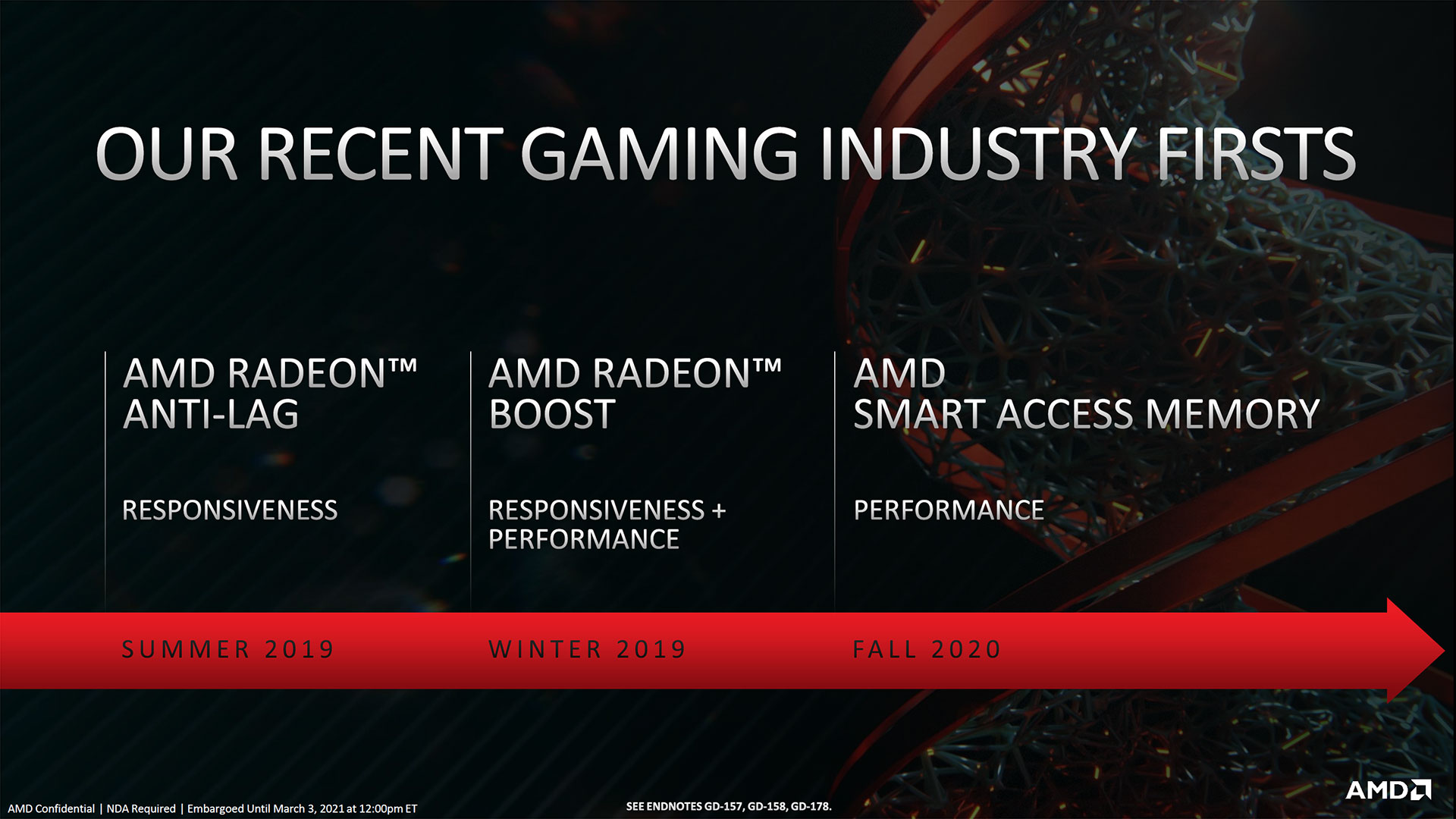
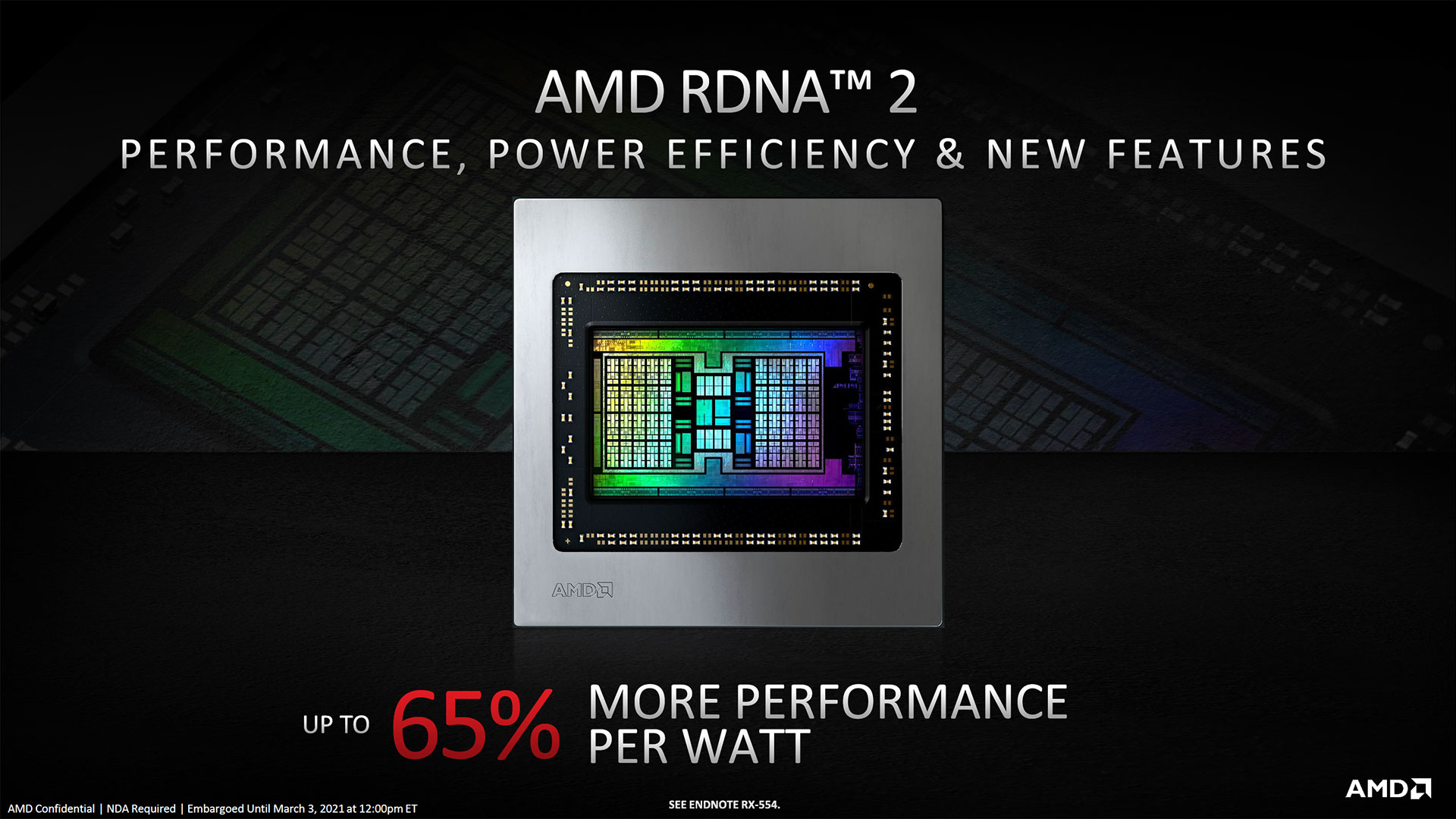

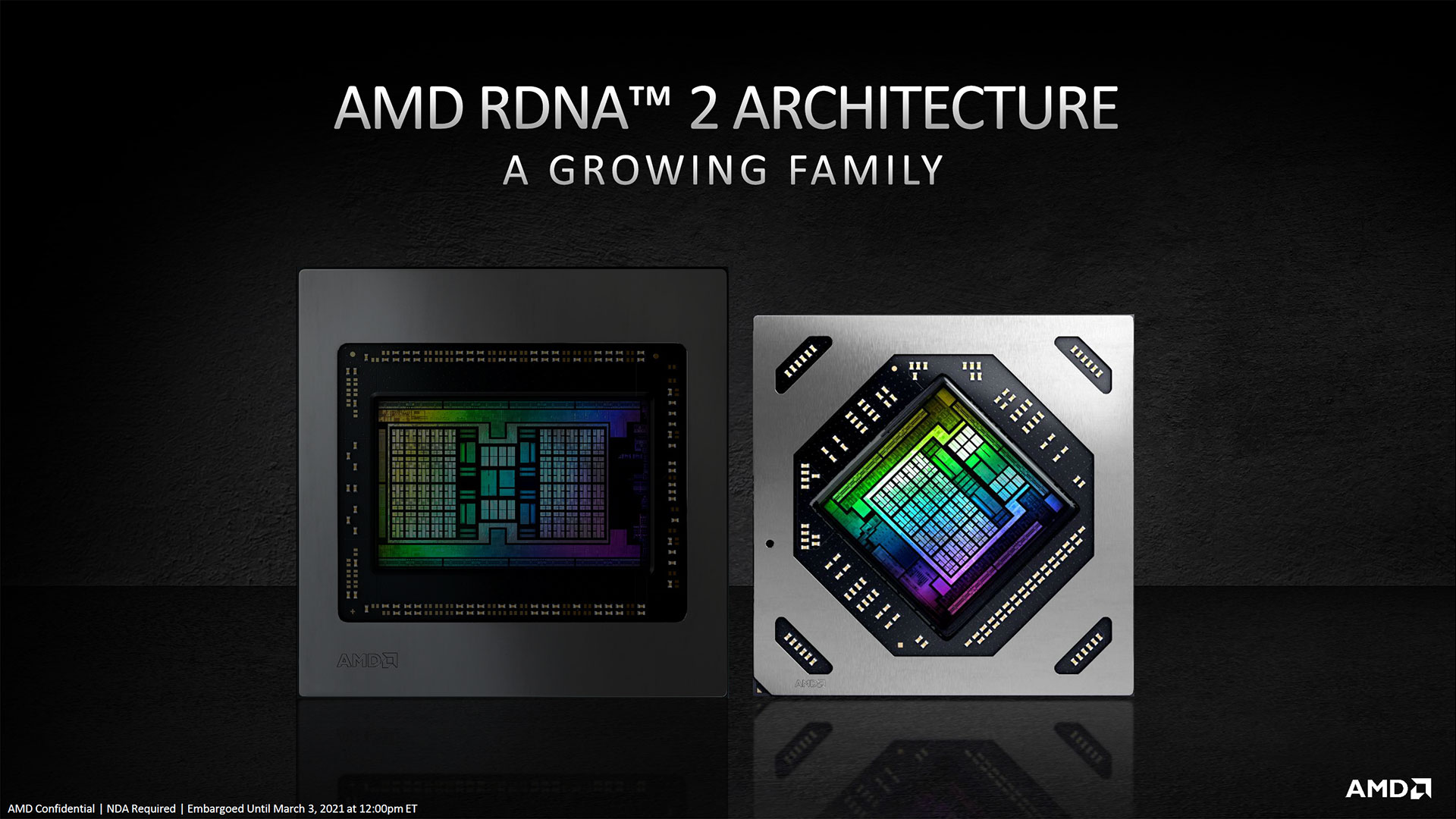


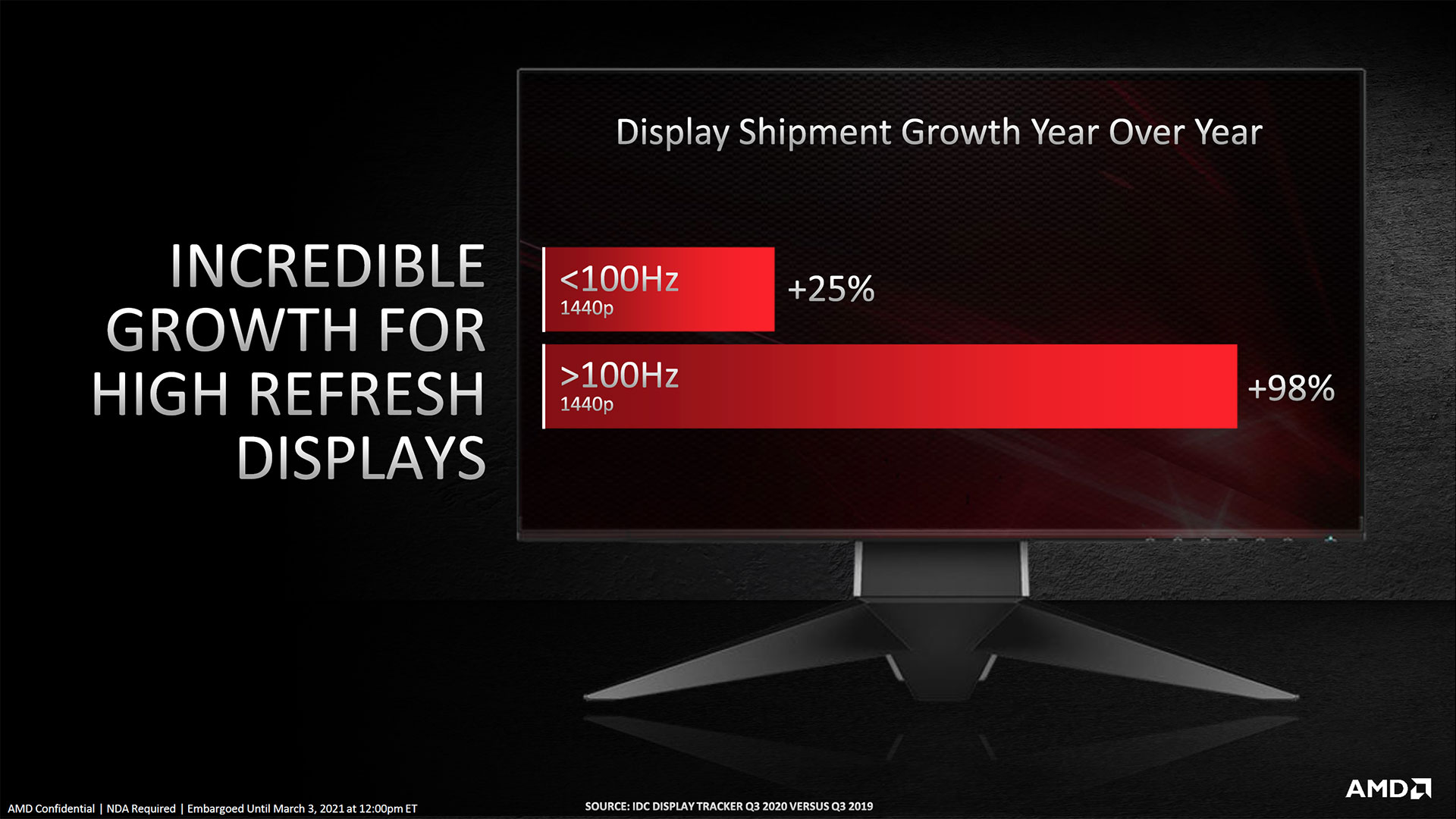

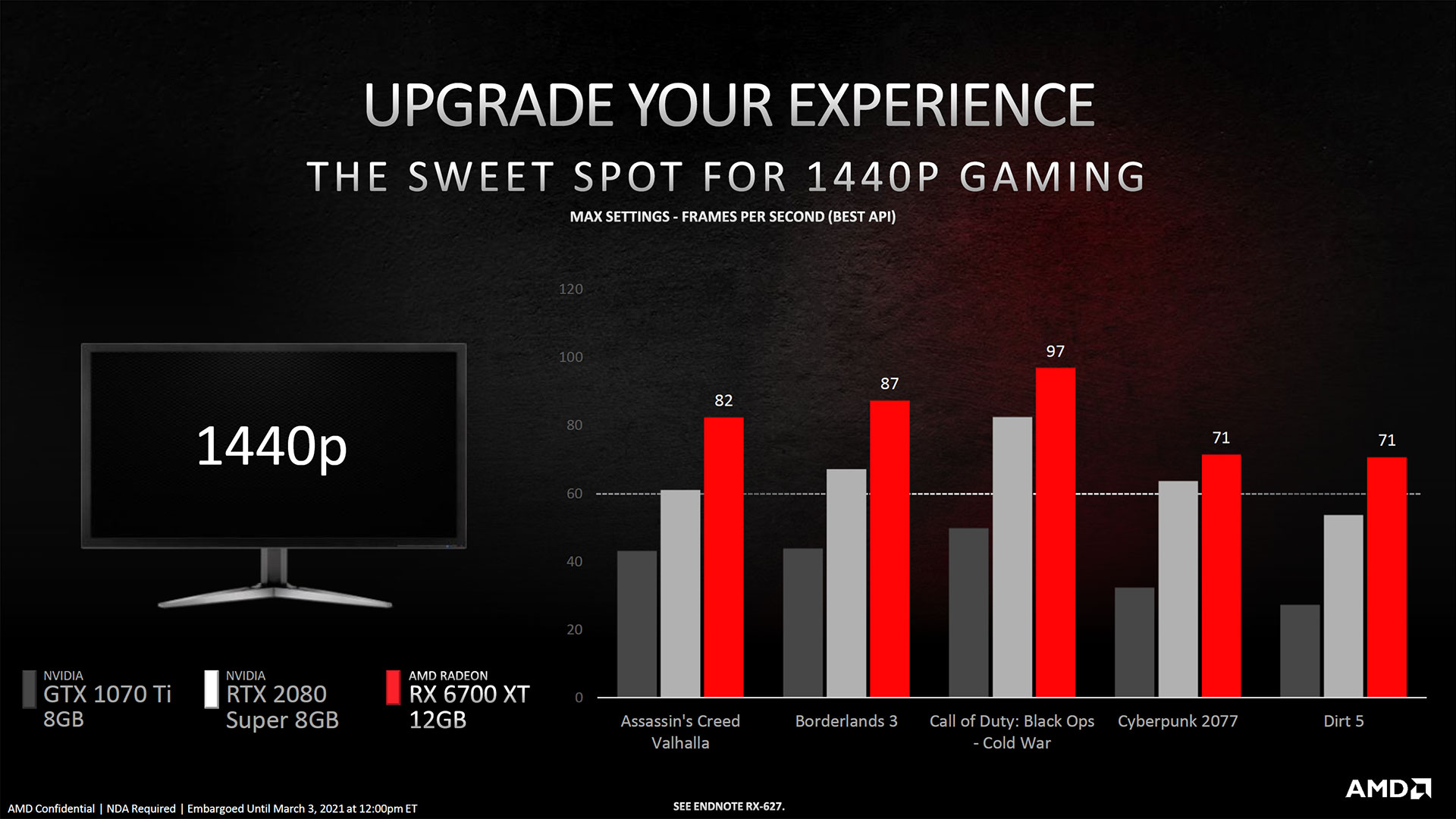

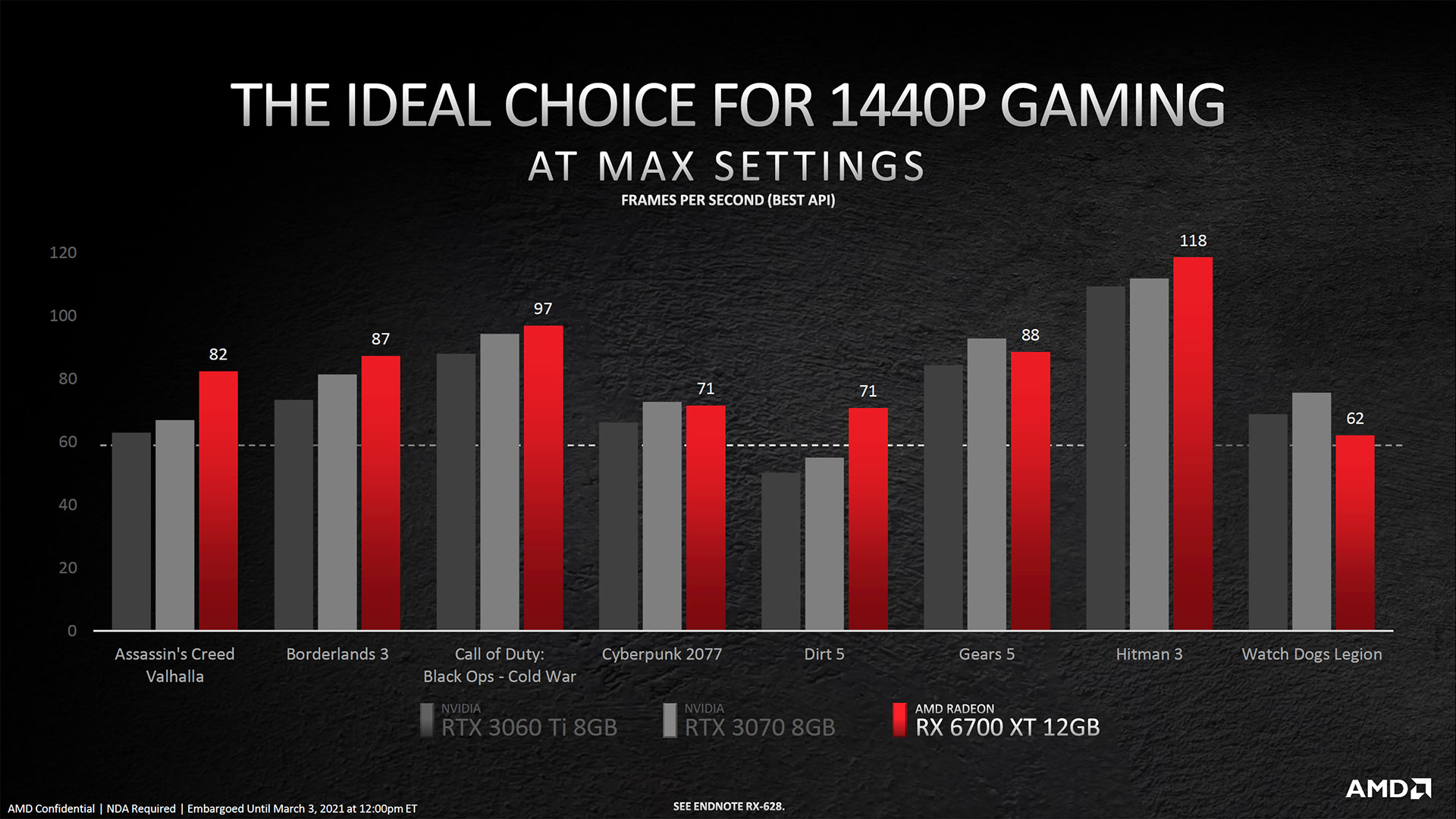

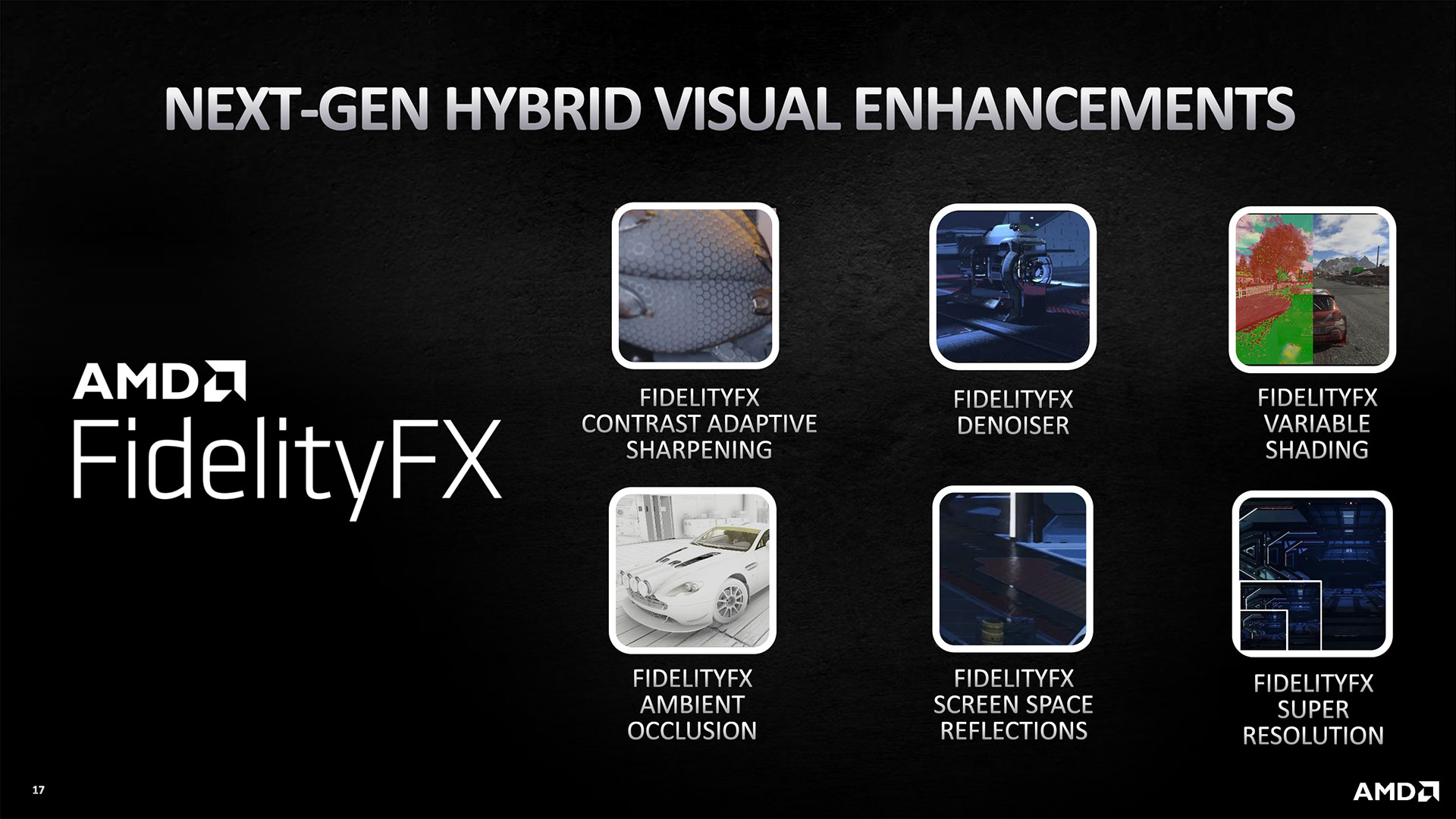
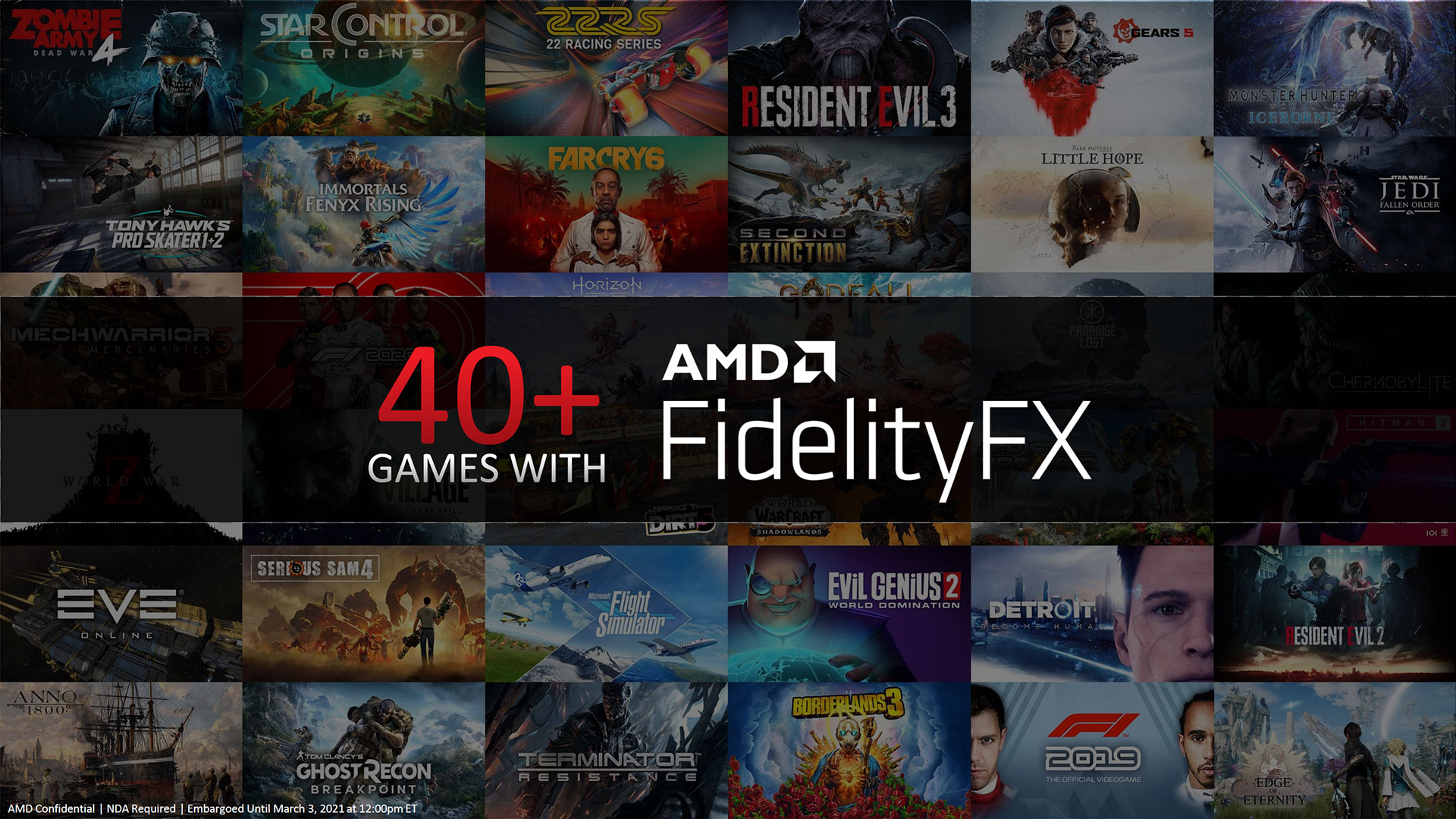
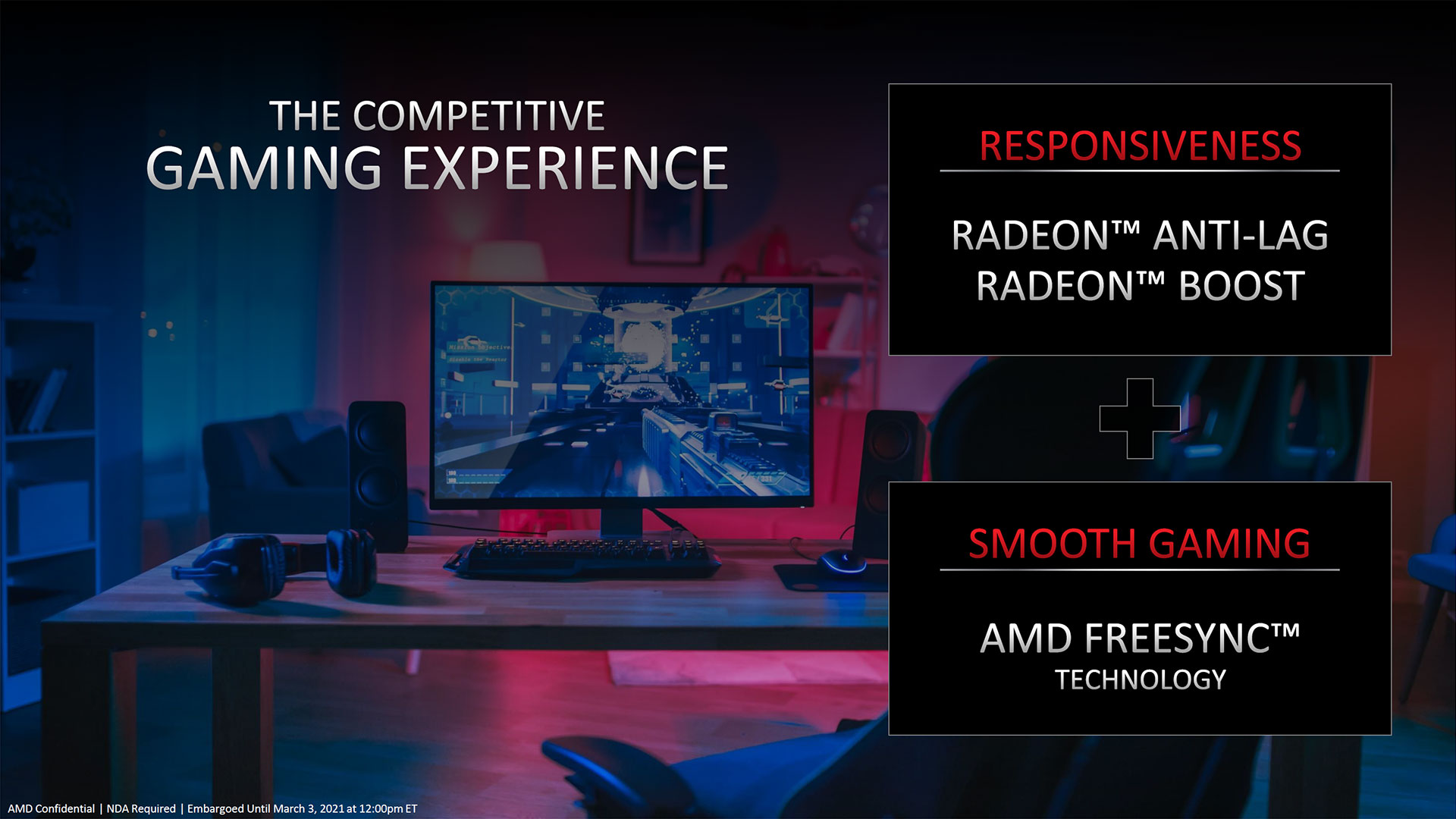

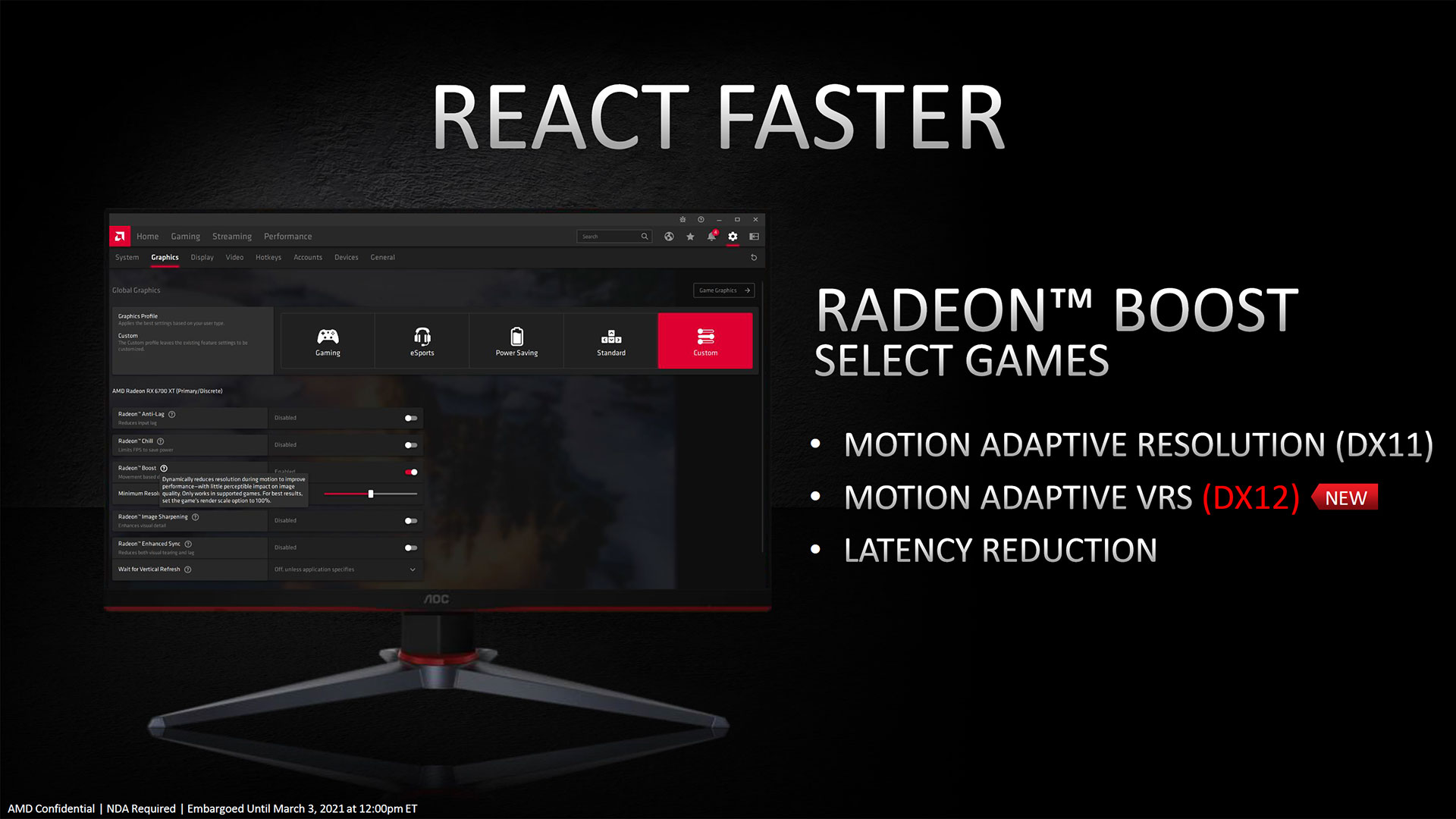
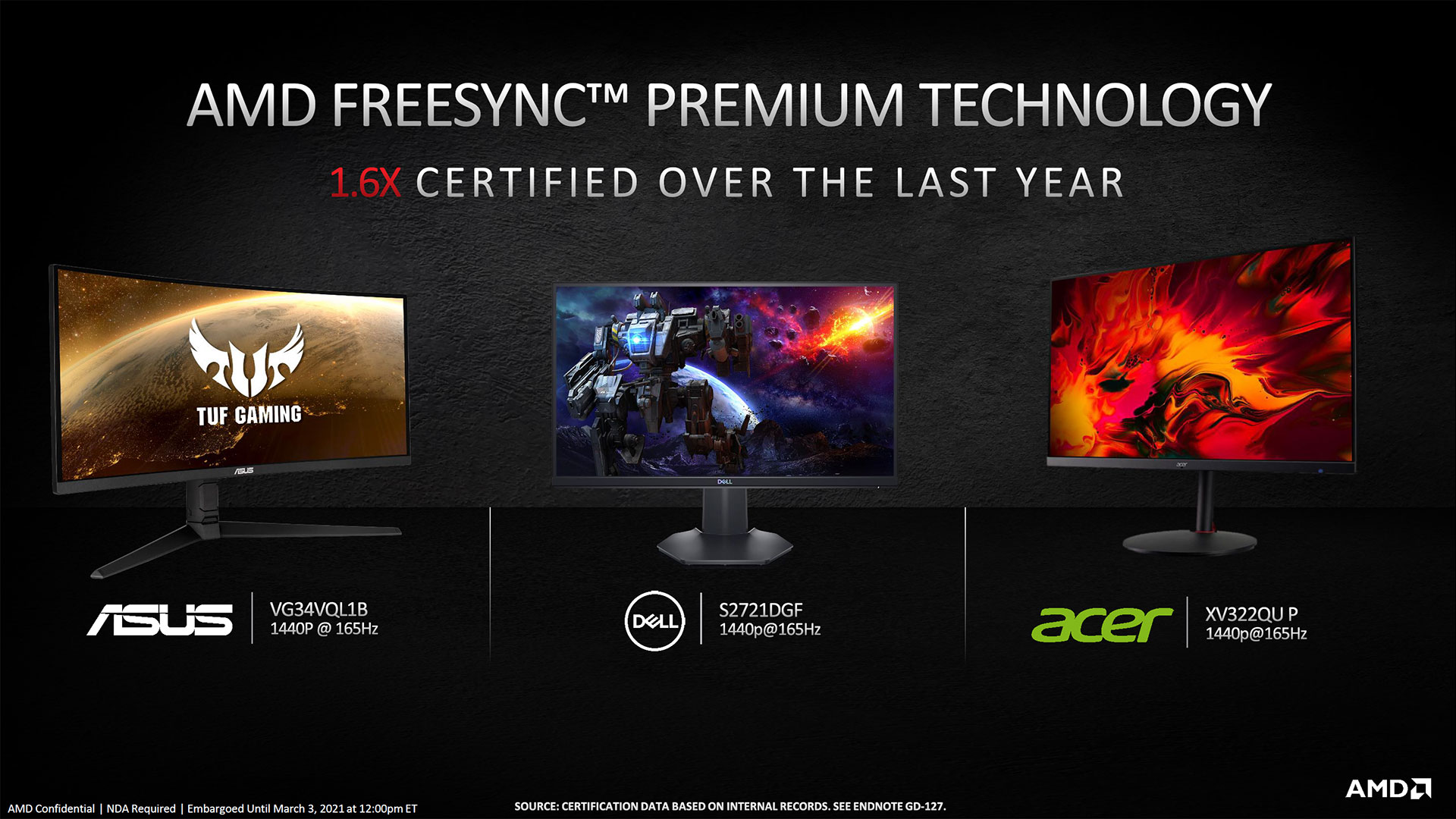
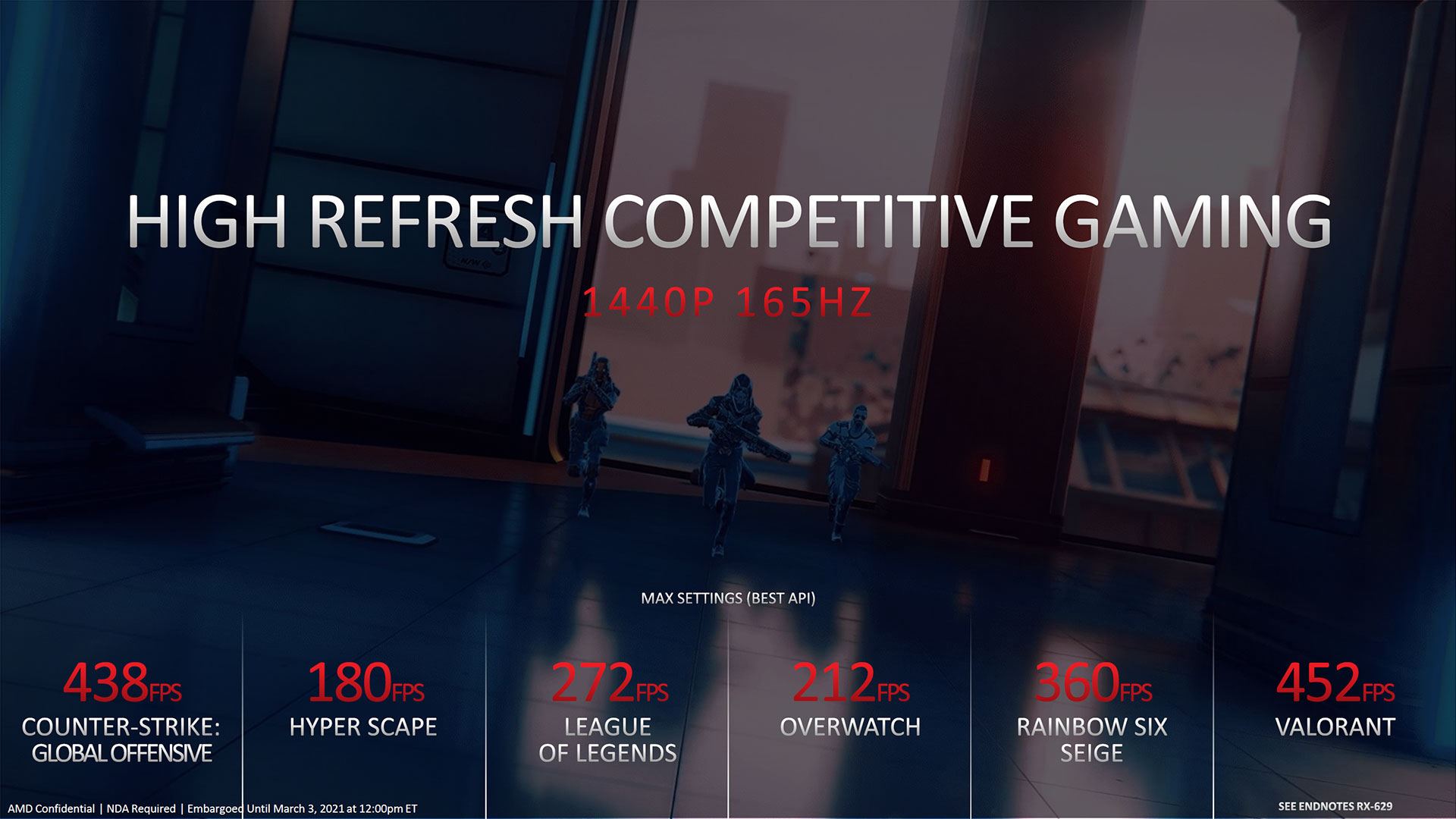

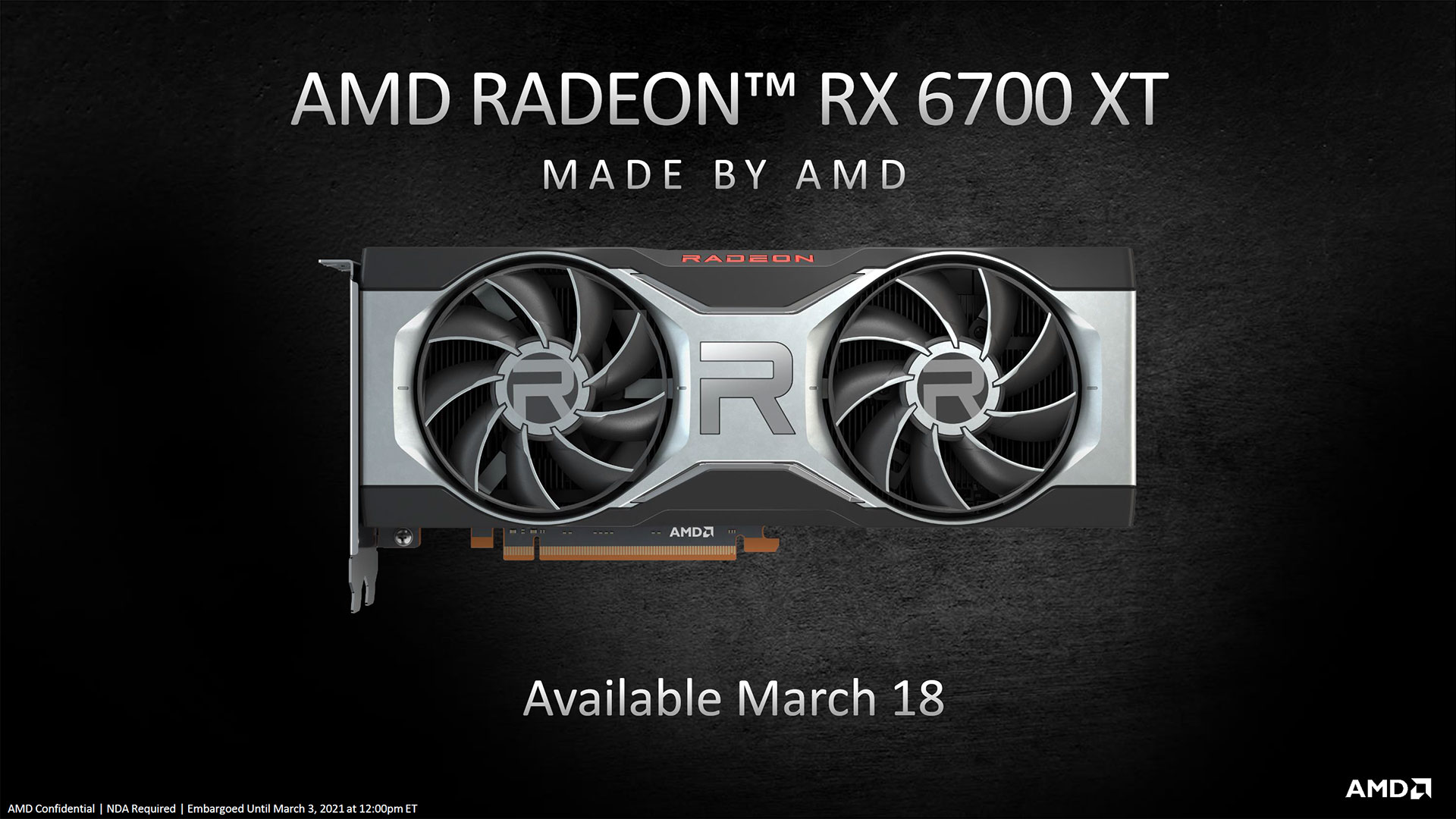
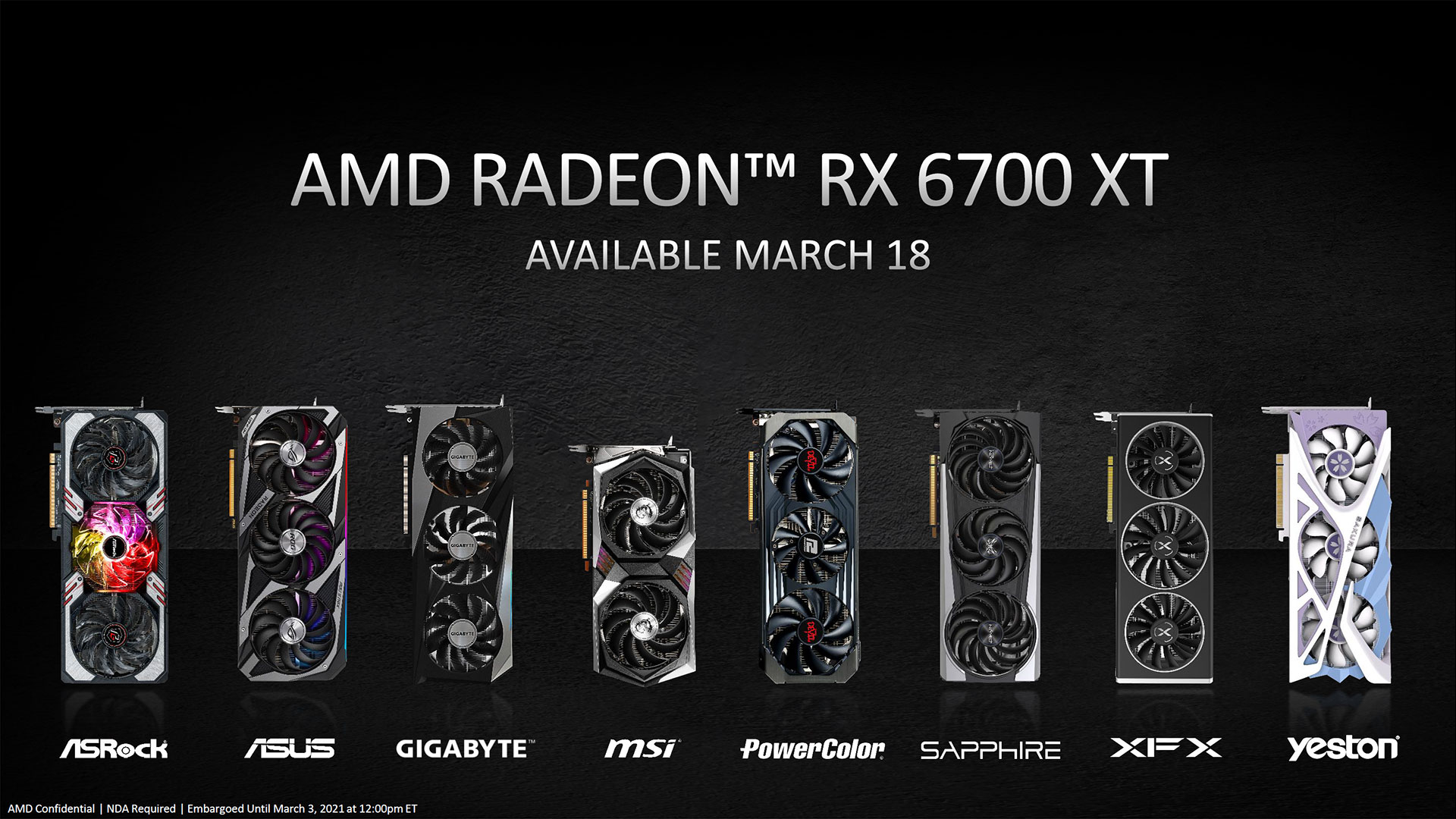

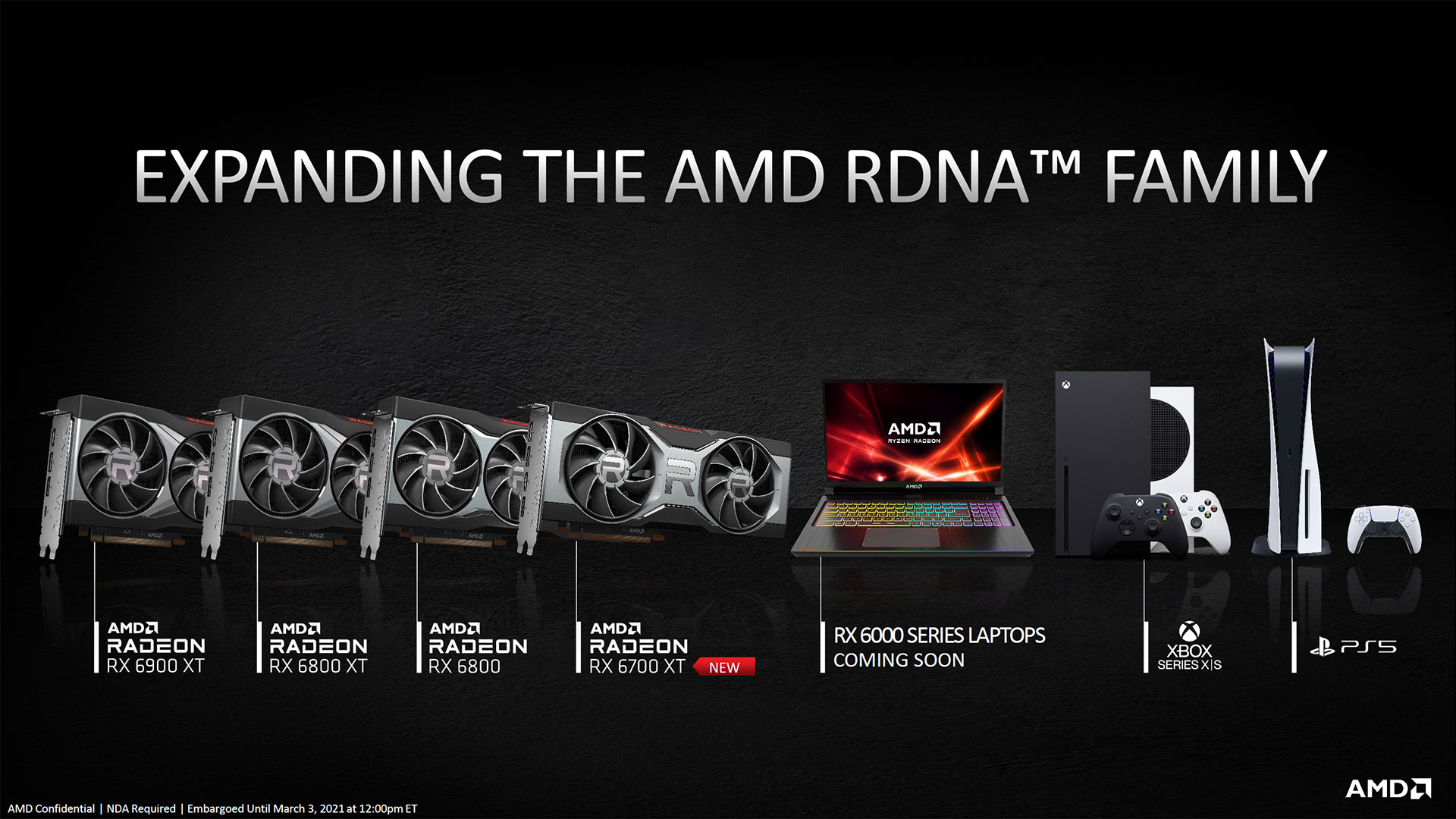


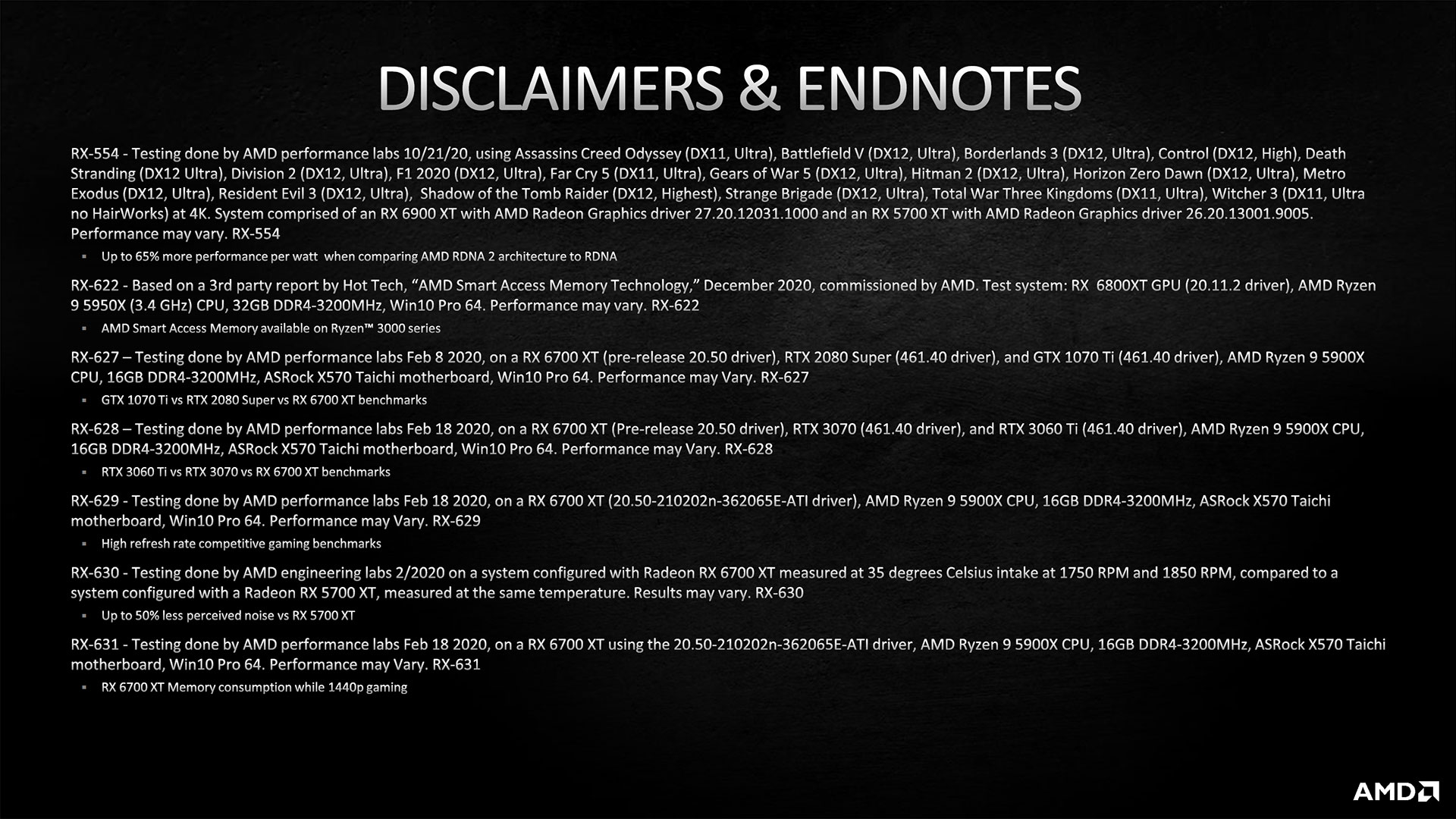

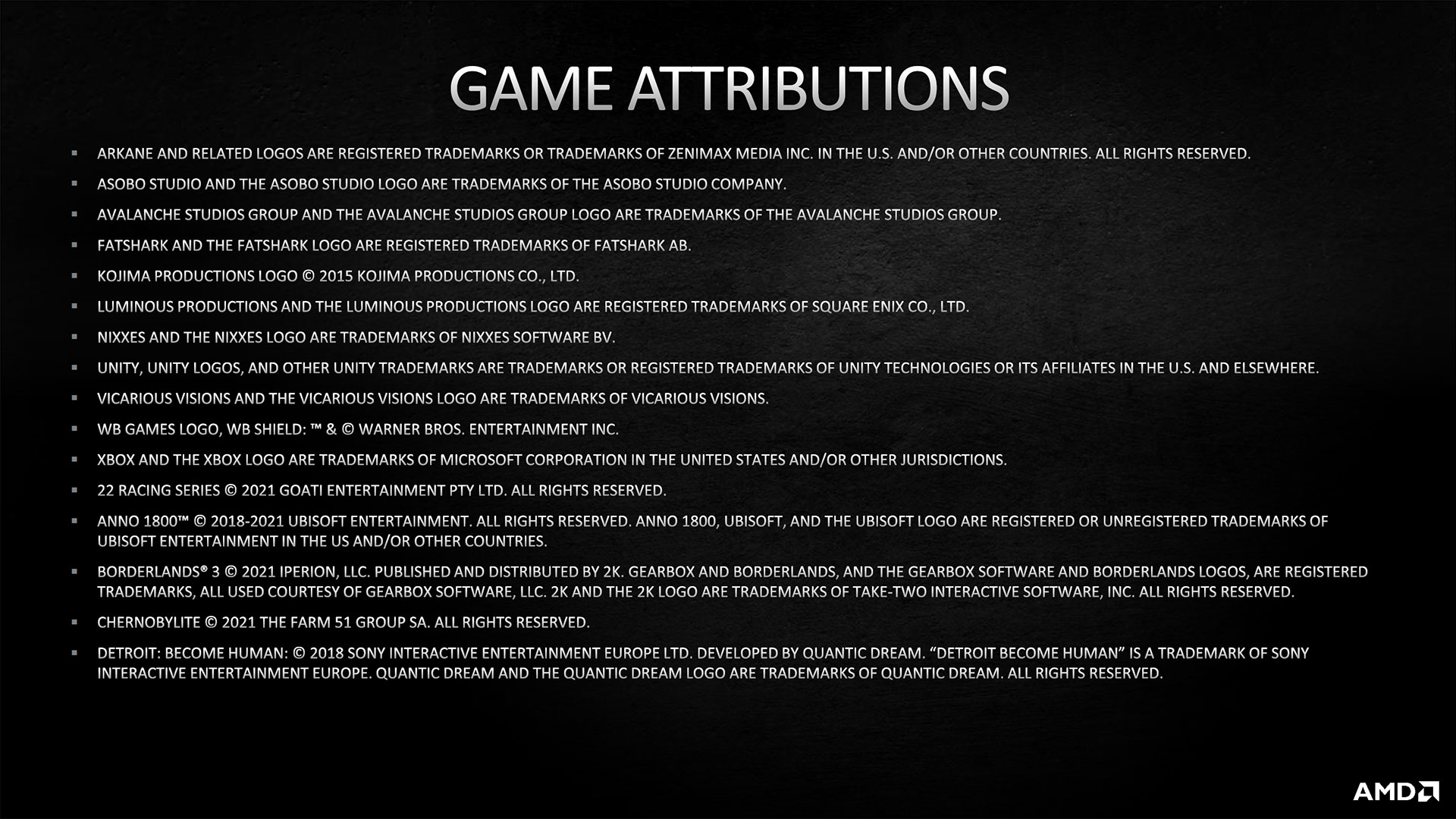

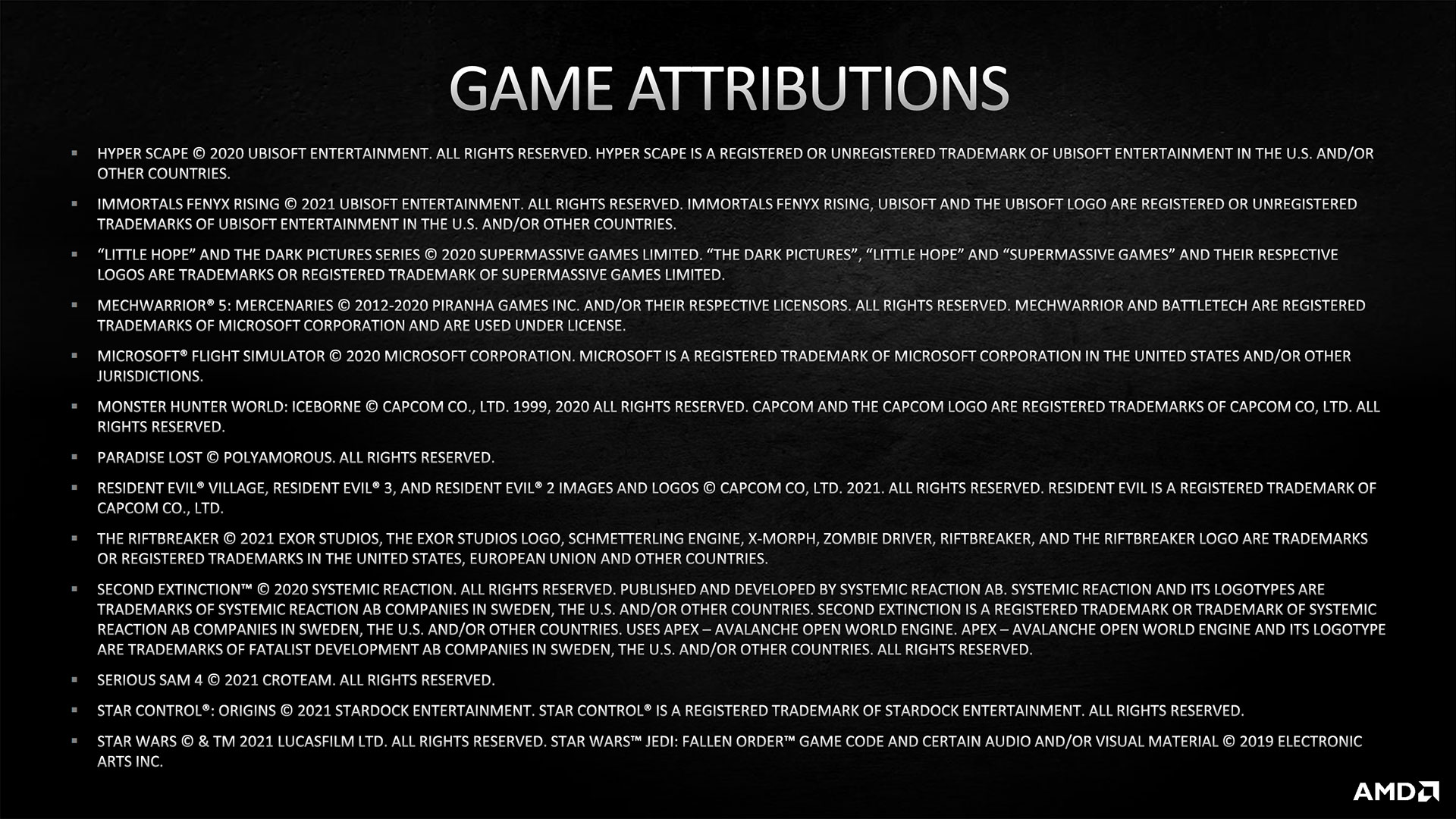

MORE: Best Graphics Cards
MORE: GPU Benchmarks and Hierarchy
MORE: All Graphics Content

Jarred Walton is a senior editor at Tom's Hardware focusing on everything GPU. He has been working as a tech journalist since 2004, writing for AnandTech, Maximum PC, and PC Gamer. From the first S3 Virge '3D decelerators' to today's GPUs, Jarred keeps up with all the latest graphics trends and is the one to ask about game performance.
-
bigdragon ReplyWe hear, and understand, the frustration from gamers right now due to the unexpectedly strong global demand for graphics cards. With the AMD Radeon RX 6700 XT launch, we are on track to have significantly more GPUs available for sale at launch. We continue to take additional steps to address the demand we see from the community.
Sell the cards through Steam. Sell the cards through Epic. AMD, if you really want to help gamers, then sell the cards through storefronts that gamers use. Tom's should communicate to AMD that the sales channel is a huge problem right now. Amazon does not set quantity limits, Best Buy will let you buy 1 of every unique SKU, Newegg is happy to let the same people win Shuffles repeatedly, and Microcenter employees make sure their friends are first in line for morning stock drops.
The 6700 XT looks impressive. If those benchmarks hold up in real world testing, then the larger VRAM gives this AMD card a huge advantage over the Nvidia offerings. Unfortunately, AIBs have been selling at double AMD's MSRP and the scalpers are even higher than that. March 18 is going to be another train wreck of a launch. -
gravagehulk Not like anyone will be able to buy one. I’m sure the scalpers will be thrilled, though.Reply -
Giroro It's times like this I get bummed out that most of the country does not have access to an in-person electronics store.Reply
Well, except for best buy, who is going out of their way to help scalpers by exclusively selling their tiny selection of overpriced pc components online.
Does anybody know if a Radeon HD 8490 can drive a 1440p monitor? People need low cost GPU options to make their ryzen pcs bootable, which means looking into GPUs that nobody has ever heard of. -
JarredWaltonGPU Reply
You're assuming AMD and Nvidia actually care that much about gamers. Gaming is a big business, and that's why they both go after it, but Nvidia has been expanding in data center and automotive for years, and it's more than happy to take miners' money. AMD bet big on mining with Polaris 20 output, and ended up with a huge surplus because of it. There are ways to try and ensure 'fair' distribution, but they all are contingent upon the manufacturers actually caring whether a card ends up with a miner or a gamer. It's a lot easier to take a 30% higher price from a miner buying $1 million worth of cards than to deal with a thousand gamers each buying one card.bigdragon said:Sell the cards through Steam. Sell the cards through Epic. AMD, if you really want to help gamers, then sell the cards through storefronts that gamers use. Tom's should communicate to AMD that the sales channel is a huge problem right now. Amazon does not set quantity limits, Best Buy will let you buy 1 of every unique SKU, Newegg is happy to let the same people win Shuffles repeatedly, and Microcenter employees make sure their friends are first in line for morning stock drops.
The 6700 XT looks impressive. If those benchmarks hold up in real world testing, then the larger VRAM gives this AMD card a huge advantage over the Nvidia offerings. Unfortunately, AIBs have been selling at double AMD's MSRP and the scalpers are even higher than that. March 18 is going to be another train wreck of a launch.
I heard a story that goes something like this. A business person walks into the headquarters of a graphics card company and says, "I want to buy as many of your RTX 3060 Ti cards as you've got." The company responds, "We don't actually sell direct to customers -- you have to deal with our partners." Then the person opens a briefcase with $10 million in cash and says, "I will pay 30% over your official street price." At this point, phone calls are made, the CEO or whoever gets involved, and amazingly this company that doesn't sell direct to customers has a new retail partner that just bought $10 million worth of graphics cards at a substantially higher price than normal.
I would wager money that such a story exists for every single graphics card and GPU company right now -- AMD, ASRock, Asus, Colorful, EVGA, Gigabyte, MSI, Nvidia, PNY, Sapphire, XFX, Zotac, and whoever else I've missed. Those are listed alphabetically, not in order of how likely I think they are to have participated in such a backroom deal. Again, I think they're all complicit. Nvidia "estimated" $100 to $300 million in sales to miners for Q4. Does that include any and all direct sales Nvidia made with miners? Probably -- and it probably incorrectly estimates only a small number of retail sales going to miners. $300 million worth of RTX 3080 cards is "only" about 300,000 cards sold at $1,000 each directly to miners. Where are all the RTX 3080 cards produced in the past nine months? (¬_¬ )
Related: Is every GA106 GPU locked down on mining performance? I bet not. In fact, I bet there are "tests" being done with special mining cards that use the same GPU and still hit 50MH/s or whatever. Maybe they'll release as CMP cards in the coming months.
As for the VRAM, the capacity won't matter much in the real world. There will be edge cases where it helps (Horizon Zero Dawn is one of the games I test with that likes more than 8GB of VRAM at ultimate settings), but the 3060 Ti easily beats the 3060 12GB in every game I've benchmarked so far. And when you encounter a game that actually uses more than 8GB in a way that hurts performance, dropping one or two setttings will fix things. -
Udyr Reply
Absolutely true. Some people forget these companies are after the money, not pleasing people. They have to advertise these cards as "for gaming" to cover their behinds from the storm that would fall upon them if they'd openly admit the mining business comes first. Take Zotac's tweet as an example of how great of an idea that would be.JarredWaltonGPU said:You're assuming AMD and Nvidia actually care that much about gamers. Gaming is a big business, and that's why they both go after it, but Nvidia has been expanding in data center and automotive for years, and it's more than happy to take miners' money. AMD bet big on mining with Polaris 20 output, and ended up with a huge surplus because of it. There are ways to try and ensure 'fair' distribution, but they all are contingent upon the manufacturers actually caring whether a card ends up with a miner or a gamer. It's a lot easier to take a 30% higher price from a miner buying $1 million worth of cards than to deal with a thousand gamers each buying one card.
I heard a story that goes something like this. A business person walks into the headquarters of a graphics card company and says, "I want to buy as many of your RTX 3060 Ti cards as you've got." The company responds, "We don't actually sell direct to customers -- you have to deal with our partners." Then the person opens a briefcase with $10 million in cash and says, "I will pay 30% over your official street price." At this point, phone calls are made, the CEO or whoever gets involved, and amazingly this company that doesn't sell direct to customers has a new retail partner that just bought $10 million worth of graphics cards at a substantially higher price than normal.
I would wager money that such a story exists for every single graphics card and GPU company right now -- AMD, ASRock, Asus, Colorful, EVGA, Gigabyte, MSI, Nvidia, PNY, Sapphire, XFX, Zotac, and whoever else I've missed. Those are listed alphabetically, not in order of how likely I think they are to have participated in such a backroom deal. Again, I think they're all complicit. Nvidia "estimated" $100 to $300 million in sales to miners for Q4. Does that include any and all direct sales Nvidia made with miners? Probably -- and it probably incorrectly estimates only a small number of retail sales going to miners. $300 million worth of RTX 3080 cards is "only" about 300,000 cards sold at $1,000 each directly to miners. Where are all the RTX 3080 cards produced in the past nine months? (¬_¬ )
Related: Is every GA106 GPU locked down on mining performance? I bet not. In fact, I bet there are "tests" being done with special mining cards that use the same GPU and still hit 50MH/s or whatever. Maybe they'll release as CMP cards in the coming months.
As for the VRAM, the capacity won't matter much in the real world. There will be edge cases where it helps (Horizon Zero Dawn is one of the games I test with that likes more than 8GB of VRAM at ultimate settings), but the 3060 Ti easily beats the 3060 12GB in every game I've benchmarked so far. And when you encounter a game that actually uses more than 8GB in a way that hurts performance, dropping one or two setttings will fix things. -
Giroro Nvidia probably isn't interested in where their GPUs go, but AMD should be. A desktop user who can't buy any GPU is a desktop user who is forced to buy an Intel CPU with an Intel chipset running Intel's integrated graphics. So every gpu AMD sells to a miner is a minimum of 2 lost sales on their other products.Reply
AMD's midrange APUs are gone, their low end dual core athlons are creeping up to $150. GT 710 gpus are also very hard to find at this point even GT 210 are getting tight, but can be found for $80+. GT 1010 never launched, as far as I can tell. If the card has GDDR memory, it's either sold out or being sold at a minimum of 2x retail, which is a lot when you're talking about a class of GPUs that gets called overpriced at $40.
AMD doesn't need another $400+ gaming GPU right now, they need literally anything to make images appear on a screen at a price that keeps their CPUs competative with Intel's integrated graphics.
I don't think AMD is prepared for that, because this is a new problem for them. But I do expect AMD to lose desktop market share again, even though its not that hard to find a 5800x right now. I think investors are going to be pretty unhappy if that happens. -
hotaru.hino Reply
I saw this marketing slide on the interwebs and sort of mentally facepalmed:JarredWaltonGPU said:As for the VRAM, the capacity won't matter much in the real world. There will be edge cases where it helps (Horizon Zero Dawn is one of the games I test with that likes more than 8GB of VRAM at ultimate settings), but the 3060 Ti easily beats the 3060 12GB in every game I've benchmarked so far. And when you encounter a game that actually uses more than 8GB in a way that hurts performance, dropping one or two setttings will fix things.
This figure doesn't matter unless you can show that it degrades performance in a meaningful way. And as you and probably a lot of other people have found, maxing the VRAM doesn't immediately lead to degraded performance. Not to mention, I've yet to see any meaningful presentation on how VRAM is used and how it impacts performance. The only thing I've seen are snippets and pieces.
I think this would only affect businesses who still deploy desktops en masse, since many of them would probably prefer a simpler system. But otherwise, last I checked laptops were still king and AMD has a potent APU for that.Giroro said:Nvidia probably isn't interested in where their GPUs go, but AMD should be. A desktop user who can't buy any GPU is a desktop user who is forced to buy an Intel CPU with an Intel chipset running Intel's integrated graphics. So every gpu AMD sells to a miner is a minimum of 2 lost sales on their other products.
AMD's midrange APUs are gone, their low end dual core athlons are creeping up to $150. GT 710 gpus are also very hard to find at this point even GT 210 are getting tight, but can be found for $80+. GT 1010 never launched, as far as I can tell. If the card has GDDR memory, it's either sold out or being sold at a minimum of 2x retail, which is a lot when you're talking about a class of GPUs that gets called overpriced at $40.
AMD doesn't need another $400+ gaming GPU right now, they need literally anything to make images appear on a screen at a price that keeps their CPUs competative with Intel's integrated graphics.
I don't think AMD is prepared for that, because this is a new problem for them. But I do expect AMD to lose desktop market share again, even though its not that hard to find a 5800x right now. I think investors are going to be pretty unhappy if that happens. -
hotaru.hino Reply
GPUs have significantly more transistors than CPUs. For example, the Ryzen 3700X has 5.99 billion transistors in total (this is spread among three chips). The GeForce RTX 3080 and 3090 have 28.3 billion. Even the RTX 3060 only has 13.25 billion. As power is a function of both frequency and transistor count, trying to push GPUs as fast as CPUs is going to result in a glass tile.Co BIY said:Why do GPUs run at much reduced speeds compared to CPUs ?

